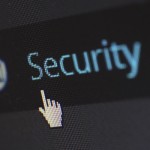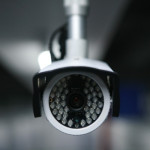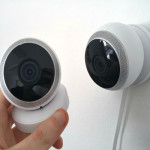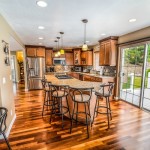Safeguard Your Video Surveillance System
While video surveillance systems protect us from potential intruders and dangers, without the proper safeguards, these systems can fall victim to hackers. In order to maintain the integrity of your video surveillance system and keep the cybercriminals at bay, you may want to consider following these tips to protect your surveillance system.
Choose Branded Video Cameras
If you invest in cameras that are not branded, you may not receive the necessary updates and security patches that often come with branded security cameras. This means that your non-branded cameras will remain susceptible to vulnerabilities and exploits. Play it safe and purchase branded cameras known for quality cyber security and be sure to routinely check for patches and updates.
Protect Your Surveillance Network
A major vulnerability of surveillance systems lies in open IP cameras. With these IP cameras located across your property and connected to your network, anyone can disconnect your cameras and connect a laptop or device and gain access to your entire network. To prevent this, lock down the MAC addresses that can connect to the network, allowing only your cameras to connect to your surveillance systems.
Setup VLANs
Never put your surveillance cameras on the same network as your workstation. Keep your security camera network isolated via VLANs and only allow the video recorders to communicate with the cameras.
Change The Default Camera Password
This seems like a no-brainer, however, it must be said. The default password is often readily available on the company’s website, thus, it is advised to change the default password to a strong one that you can remember.
Keep Separate Logins For Access & Admin Privileges
Along the same lines, you want to keep separate logins when it comes to access and administrative privileges. That way only the appropriate employees can gain access to the admin privileges, such as updating firmware or obtaining streaming video.
Do you have any other surveillance system tips to share? Connect with us on Facebook, Google+, Twitter, LinkedIn, and Pinterest.
Visit SecurityCamExpert.com to browse our stock of affordable CCTV security cameras and video surveillance systems. To request a site survey or free quote, please call 888-203-6294.
Night Vision Security Camera Tips
Burglars often like to creep in the dark night in hopes of being undetected. This is precisely why night vision security cameras are so important. But keep in mind that the value of night vision cameras is directly connected to their effectiveness and performance. To employ the best night vision surveillance system, keep these things in mind.
- IP Power
Remember that all IR CCTV cameras have a quoted maximum range. For example, these can range from 5m to 50m or longer. This range is the absolute maximum, meaning at these extremes, your image quality will not be its best. Measuring how far you need to see and then adding a third of that is recommended. For example, if you need to see 30m, it may be advised to invest in a 40m camera.
On the other hand, you don’t want the IR to be too powerful either. Most CCTV cameras cannot adjust the IR brightness, thus, if a subject is too close to a camera designed for long ranges, it will simply look too bright and/or washed out.
- Wide Angle Lenses
IR LEDS are designed to brightly illuminate the center of an image, therefore, most of these cameras will not have a very wide angle of view. While this is not a common problem, some cameras will have varifocal lenses that can zoom out. With these, be aware that at the wide end of the zoom, the corners of your image will not be covered by night vision.
- Field Of View
For all security cameras, you want to be sure that the field of view is clear of obstructions, but this is especially important for IR CCTV cameras. If there is something like a branch or leaves in the frame, the LEDs will focus on these and they will be brightly lit. The rest of the image will be made darker in order to compensate, thus rendering the image is useless.
- Reflection For IR
In order for night vision cameras to work, IR needs something to reflect off of. When users point a camera into an empty field, they may be alarmed when there is nothing but darkness and may assume the night vision is not working, but this is not the case. When a subject moves into range, the IR can reflect off of it, and thus, the subject will be visible.
- Mounting Height
Keep the height at which your cameras will be installed in mind when you are considering the power of your night vision. This is especially important when installing cameras above ground floor height. For example, if your car is parked 4m away from your house, and your camera is mounted 3m from the ground, the actual distance from camera to car is 5m.
Share your own night vision camera tips with us on Facebook, Google+, Twitter, LinkedIn, and Pinterest!
For a great selection of night vision security cameras and surveillance equipment, visit SecurityCamExpert.com or call 888-203-6294 to speak with us directly.
Positioning & Installation Tips For IP Cameras
IP cameras offer excellent benefits for home security, including ease of installation and advanced functions. However, if not installed or deployed properly, these benefits can be negated.
Whether you are installing your own security system, or you are having it professionally installed, be sure that the right cable is being used and that it is installed correctly.
Here are more tips for IP security camera installation:
- Be sure that UTP connected devices (ex. couplers, modular plugs and wall plates) match the Category of the cable used, and that this is done consistently throughout the installation.
- For optimum performance (by design and specification), cable runs in an IP camera system can only extend up to 295 feet.
- The bend radius of both Cat-5e and -6 cables must be limited to four times the cable diameter – the acceptable bend radius is no less than 1 inch.
- The pull tension while installing Cat-5e/-6 cannot exceed 25 pounds.
- Limit the length before stripping the sheath from a cable in a wall box so that the excess can easily be pushed back into the wall cavity.
- Do not staple Cat-5e/-6 cable. Use D rings, bridle rings, J hooks and other devices that do not risk altering the outer form or dimensions of the cable.
- Keep a 6-10 inch parallel distance between Cat-5e and -6 cables and high-voltage wires (120/240VAC).
- Strip Cat-5e/-6 cables back as little distance as necessary when attaching them to connecting devices.
- Use either the T568A or T568B connection format and stick to just one throughout the entire installation for conformity.
Aside from the proper cable, you must take the surroundings of your security camera placement into consideration. Be sure that the IP cameras you choose are suitable for the environment in which you install it.
- Be mindful of the different lighting conditions your security cameras will be subjected to when selecting cameras.
- When considering camera placement, keep in mind the field of view and any obstructions that might prevent a clear view of the area.
- Be sure there is sufficient network connectivity available in the vicinity of where your camera will be placed.
- For all outdoor cameras, especially in areas known for lightning, use surge protection.
- Assure that the PoE power supply you use is adequate for the job. Be sure to compute the power load before making a final choice.
- To assure the integrity of the camera (especially in areas prone to crime), use vandal-proof housing.
- Cat-6 UTP is always best, but Cat-5e is a cost-effective alternative, doing an adequate job of handling most video transport needs.
- Using fiber instead of metallic has its advantages. Foremost, fiber allows you to run camera signals at greater distances and with greater bandwidth than metallic cable can provide.
- Last but not least, use safe installation practices to assure that everyone goes home at the end of the day.
If you are looking for affordable prices on professional security camera installation, give us a call today 888-203-6294. You can also browse our CCTV surveillance selection online at SecurityCamExpert.com. Stay connected with us on Facebook, Google+, Twitter, LinkedIn, and Pinterest.
Expensive Security System Mistakes
Sometimes you end up paying more than you should when it comes to home security systems. Whether it is from lack of research or sheer convenience, there are ways to effectively invest in your home security without breaking the bank. Review these common home security mistakes to ensure you are getting the most for your money.
• Mistake: Your first option was your only option.
Don’t just go with the first company you find -do your research. Check out both local and national companies to compare rates and get free quotes when possible. This step will help you discover who truly values your security versus those looking for a big sale.
• Mistake: You didn’t consider lifestyle changes.
Aside from thinking about your current needs, you should also consider your future plans. For example, if you’re planning on growing your family, you may want more surveillance in the nursery. Or, if you’re single, you may relocate a few times before settling in to a spot, so you may want to inquire about cancellation or relocation services.
• Mistake: You’re overlapping cameras.
While the idea of having multiple angles on entryways and high traffic areas sounds safer, it could be unnecessary. Focus more on getting the best angles with the least amount of cameras. This will save you money on equipment and could make it easier to manage your system.
• Mistake: You didn’t talk about discounts.
When it comes to discounts, it doesn’t hurt to ask. You could be missing out on special deals and offers, such as a Veteran or senior citizen discount, or you may even be able to work out a payment plan rather than paying it all up front.
• Mistake: You haven’t updated your insurance.
No matter what kind of equipment you choose, be sure to let your home insurance provider know. These systems may add value to your home, and could possibly save you some cash on your monthly payment. But before committing to system, you should check with your provider.
• Mistake: You have more than you need.
In relation to the overlapping cameras, you may have opted for the most comprehensive system when you really could do with a simple set up. Evaluate your needs, such as how many entry points you wish to monitor, and you can tailor your system accordingly. Remember that when it comes to security cameras, choose quality over quantity.
If you’ve made any of these mistakes, you can still make them right. If you need help, please feel free to call us at 888-203-6294. We can help with surveillance equipment, site surveys, and security camera installation. Visit SecurityCamExpert.com to browse our selection and connect with us on Facebook, Google+, Twitter, LinkedIn, and Pinterest.
Indoor Security Tips
Security cameras placed outdoors allow you to monitor your property while acting as a deterrent for trespassing. But what happens if criminals proceed anyways?
Indoor security cameras will show you what happens when the intruders get in. Should theft or damage occur, you are left with video evidence of the crimes to assist in capturing the criminals.
For everyday use, indoor security cameras help to monitor daily activities, such as kids returning home from school, or checking in on pets while you’re at work.
While there are several benefits of indoor cameras, it may be difficult discerning the most effective places to install them. Here are some helpful tips for choosing the best locations for your indoor security cameras.
Statistics show that the most common entry points for burglars are through first-floor doors or windows, thus, your main entrances should be your top priorities. The front door, back door, garage door, and other first-floor exterior doors and windows should be equipped with some type of security (ex. locks). If possible, installing security cameras to cover all of these spots would be ideal.
- One of the most common places for an indoor security camera is in a high traffic area that provides coverage for as many areas as possible. Try to find the right angle and placement for a camera that will give a bird’s eye view of the larger area. For example, the family room may have views of the kitchen, back door, garage door entrance, and possibly even the front door.
- For larger homes or homes with a second or third story, additional security cameras may be necessary to sufficiently cover the interior of the home. Expansive one story homes may need multiple cameras to cover different rooms and entrances, while multiple story homes may need more cameras to cover each level.
- If an extensive security camera system does not fit within your budget, choose key areas that are highly targeted by burglars and install cameras there. For example, the family room often houses expensive televisions and electronics. Or if you have a family safe, you can place a camera in that room for added security.
- Once you have chosen the locations for your cameras, be sure to install them out of reach. Not only will this help to get a better view, but it will also help to prevent any damage of theft. If your security cameras are easily accessible, burglars may destroy them to eliminate evidence, or possibly steal them.
Share your indoor security camera tips with us on Facebook, Google+, Twitter, LinkedIn, and Pinterest today!
For a great selection on indoor security cameras and more, visit SecurityCamExpert.com. For more information on site surveys and our installation services, please call 888-203-6294.
Independence Day Fireworks Safety
Summer is here and Independence Day is right around the corner. Most people celebrate with fireworks, whether they watch professional public displays or they light their own. While the former is encouraged, those who choose the latter should be extra cautious. Fireworks can be very dangerous if not handled properly. Before you put on your own fireworks show, please review these fireworks safety tips.
- Leave Fireworks To The Professionals
- As mentioned, if at all possible, enjoy the view at a public fireworks display and leave the heavy-lifting to the professionals.
- If you prefer to light your own fireworks, be sure that they are legal in your area.
- Be Extra Careful With Sparklers
- Because sparklers are fairly easy to use, people may think they are safe for kids, however, this is not the case. Sparklers can heat up to 1,200 degrees and are not meant for children’s short arms. Glow sticks can serve as a safer alternative.
- As a reminder, always closely supervise children in the presence of fireworks.
- Take Necessary Precautions
- Avoid wearing loose clothing while using fireworks.
- Never light fireworks indoors or near dry grass.
- Point fireworks away from homes, and keep away from brush, leaves, and flammable substances.
- Always Be Prepared
- Stand several feet away from lit fireworks. If a device does not go off, do NOT stand over it to investigate. Instead, put it out with water and dispose of it.
- In addition, always have a bucket of water and/or a fire extinguisher nearby. Also, you should know how to operate the fire extinguisher properly.
- Should a child or adult become injured by fireworks, go to a doctor or the hospital immediately. If an eye injury occurs, don’t touch or rub it as this may cause further damage.
Share your own fireworks safety tips with us on Facebook, Google+, Twitter, LinkedIn, and Pinterest!
Visit SecurityCamExpert.com to browse our excellent inventory of security cameras, CCTV surveillance packages and more.
Please remember, we will be closed on Tuesday July 4, 2017, for the holiday. Normal hours will resume on Wednesday July 5, 2017. We apologize for any inconvenience this may cause. From everyone at SecurityCamExpert.com, please enjoy a safe & happy 4th of July!





